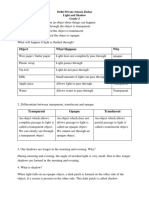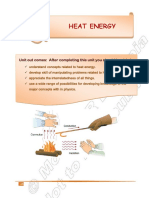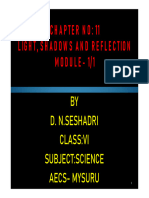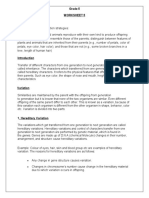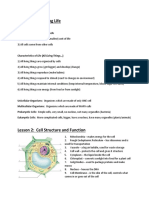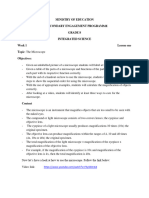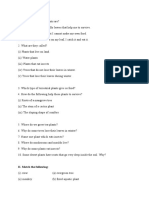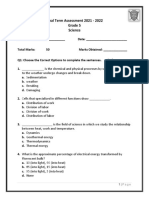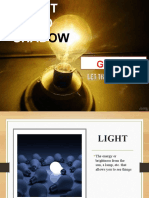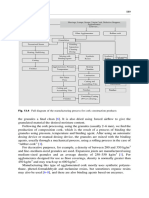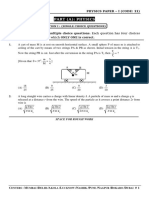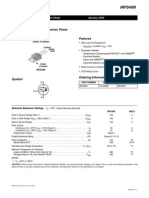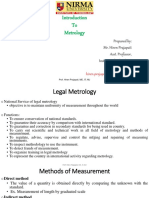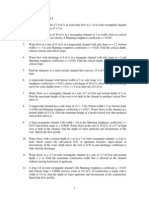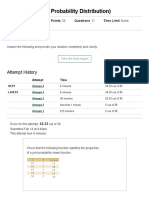0% found this document useful (0 votes)
391 views20 pagesLight and Shadows
Light travels in a straight line and shadows are formed when light is blocked by an opaque object. Shadow size and shape depend on the position of the light source, object, and surface. Dark colors absorb more light and heat up quicker than light colors in sunlight. Shadow experiments show black paper produces the darkest shadows because it absorbs all light.
Uploaded by
jessicaCopyright
© © All Rights Reserved
We take content rights seriously. If you suspect this is your content, claim it here.
Available Formats
Download as PDF, TXT or read online on Scribd
0% found this document useful (0 votes)
391 views20 pagesLight and Shadows
Light travels in a straight line and shadows are formed when light is blocked by an opaque object. Shadow size and shape depend on the position of the light source, object, and surface. Dark colors absorb more light and heat up quicker than light colors in sunlight. Shadow experiments show black paper produces the darkest shadows because it absorbs all light.
Uploaded by
jessicaCopyright
© © All Rights Reserved
We take content rights seriously. If you suspect this is your content, claim it here.
Available Formats
Download as PDF, TXT or read online on Scribd
/ 20



